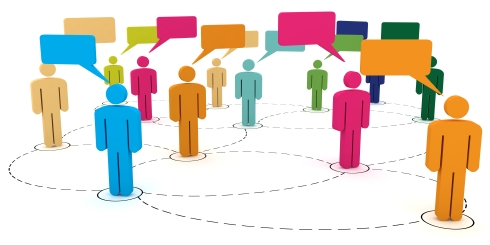- Home
- Articles
- Reviews
- About
- Archives
- Past Issues
- The eLearn Blog
Archives
| To leave a comment you must sign in. Please log in or create an ACM Account. Forgot your username or password? |
|
Create an ACM Account |

"The way we describe something can affect the way we perceive it and way we perceive it can affect the way we use it." —Whorf, Korzybski, Thaler, Ross
The Internet is rapidly evolving from pages (web pages, static, one way) to streams (conversation, real-time, two way), bringing with it changes in the ways we learn and share our learning. "Learnstreaming" can help you (and others) make sense of your online learning experience by publishing your learning activities online for the benefit of you and others. Keep in mind learnstreaming requires that you have a learnstream. This article offers an overview of learnstreaming and ways new tools and technologies can support it.

Time is represented across the horizontal axis ranging from the present moment to the past. Depth of knowledge or information is represented along the vertical axis and has two layers:
Now that we've seen the structure, let's look at how learnstreams are fed and how they connect to other learnstreams.

Jay Cross's concept of the learnscape fits perfectly with learnstreaming. A learnscape is a learning ecosystem, which is a community of connected people learning and working together. We connect in the learnscape using our learnstreams. Harold Jarche says that "learnstreams are the water that allows learnscapes to grow."

Listening. This is the input into the learnstream where we listen to the learnscape. We listen through multiple sources and have control over some of the content entering our stream. Content is either filtered or unfiltered:
Thinking. This is how we purify the information entering the learnstream. We process, refine and create content by applying thinking processes (e.g., critical and creative thinking) to existing content or we create new content.
Speaking. This is how we output into the learnscape and is based on many factors including:
Learnstreaming is not about the tools, but we need tools in order to participate within the learnscape. Most of the tools require a username. If you're just getting started, you may want to check your preferred user name for multiple tools or services at once using either namechk or knowem.
Here is a list of basic tools to help get your learnstream flowing:
| Function | Tool/Service | Purpose is to | Listen, Think, Speak |
| Bookmarking | Delicious/Diigo | Save and share bookmarks | L, T, S |
| Blog-lite | Tumblr/Posterous | Easily create blog posts or share other web content on your site | L, S |
| Contacts | Create and maintain business and industry relationships | L, S | |
| Social Networking | Facebook/Google+ | Connect and share with friends and colleagues | L, S |
| Microblog | Twitter/Yammer | Communicate and share using short messages | L, S |
| Photo Repository | Flickr/SmugMug | Store and share photos or other items converted to an image | L, S |
| RSS Reader | Google Reader/Netvibes | Read many sites and pages from one location | L, T, S |
| Url Shortner | Bit.ly/goo.gl | Reduce the size of a url to make it easier to share and view | S |
If you already have the basic tools and are looking for more, see the tools below. For a comprehensive list of tools, see Jane Hart's Directory of Learning Tools.
| Function | Tool/Service | Purpose is to | Listen, Think, Speak |
| Comments | Disqus | Tack your blog comments in one location | L, T, S |
| Communicate | Skype | Communicate (voice, video, instant message) | L, S |
| Presentation | Slideshare | Create, share, store and view presentations | L, S |
| Documentation | Scribd | Create, share, store and view documents | L, S |
| Mind mapping | Mindmeiser | Diagram to help draw ideas, concepts, tasks | T, S |
| Posting | Ping.fm | Update many social services from one location | S |
| Wiki | PBWiki | Create collaborative website | T, S |
|
To leave a comment you must sign in. |
|
Create an ACM Account. |
Thu, 27 Oct 2011
Hi Andrea - good observation. I think all of the tools require some form of T (thinking). My actions column describes the output of the tool. I'll re-think and adjust based on your comment. Makes sense.Post by Dennis Callahan
Thanks for the comment. Dennis
Sat, 01 Oct 2011
Very interesting model and classification but I can't understand why you consider as "LST" just bookmarking and Rss Reader. I think blogging and social neworking require more T-time than bookmarking or reading Rss. Maybe it's not clear to me how you describe thinking activities. So I can agree that slidshare is just LS but I think Skype is LTS: every communication process needs T and I think Skype is a tool requiring T-activation, while the actions slideshare requires does not activate T.Post by Andrea Marcante